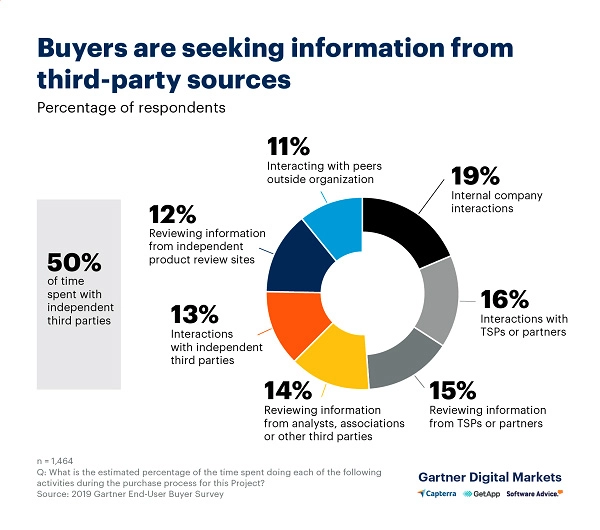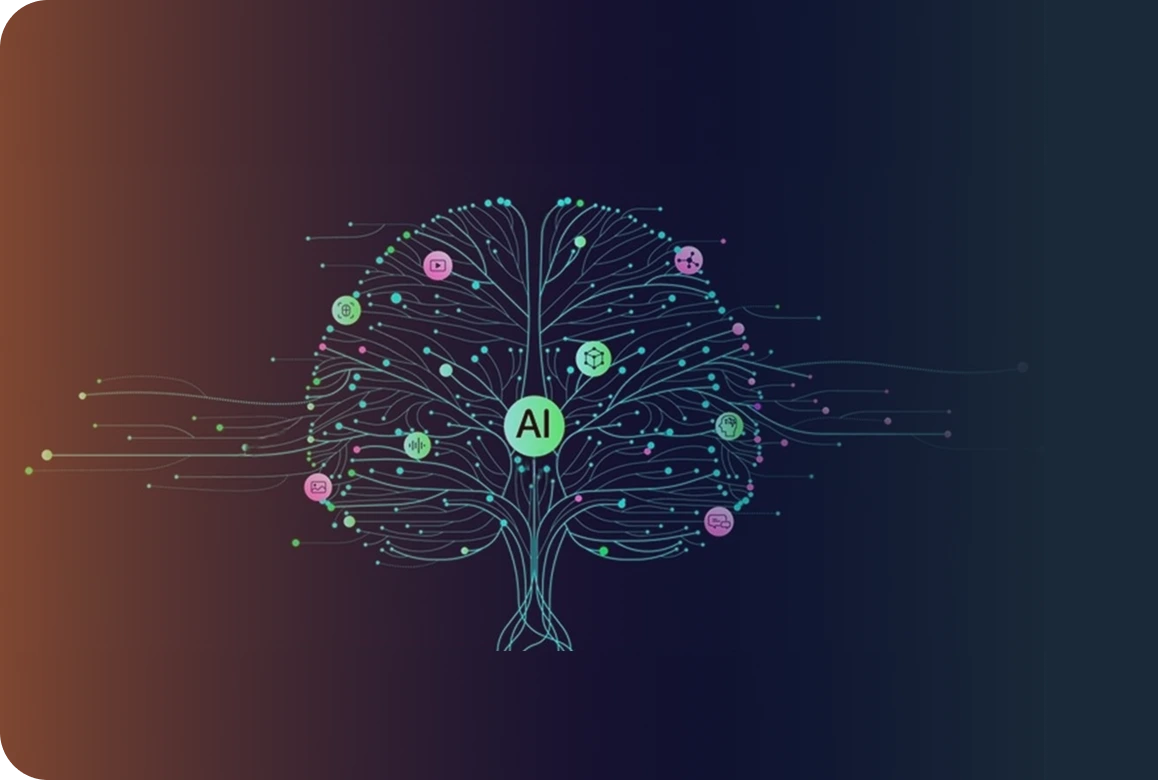
Introduction
There’s no service sector today where technology isn’t ruling. Based on the recent pandemic trends, the education industry is quickly inclining towards technology realms than expected speed.
In 2020, the education technology market size was recorded at $89.49 billion. Further, it is projected that the ed-tech industry will grow at a CAGR of 19.9% from 2021 to 2028.

Source: Grand view research
The ed-tech services and products are now more revolved around user-driven technologies like Virtual Reality, Artificial Intelligence, and many others. This, in return, spiked interest of startup and corporate companies to make significant investments in the education sector. As of July 2021, 28 global ed-tech unicorns have raised over $18 billion in funding in the last decade.
That means the online education sector works like any other B2B or B2C industry where the customer drives the sales. Therefore, today you have to market your ed-tech services like any other SaaS products using intent data.
Intent data that will tell about buyer’s intent signals and help you market your brand effectively. So, without any ado, let’s understand what buyer intent signals are and how to leverage them to market your ed-tech services.
What Are Buyer’s Intent Signals?
Many of you are already familiar with buyer’s intent data and its role in B2B lead generation. But if you aren’t, it is simply a purchase intent probability. Intent data is a willingness of a customer to purchase your services under a certain timeframe.
Here buyer’s intent signals are potential customers’ actions that define their proximity to buying your products or services. For tech-based sales and marketing, it is very crucial to understand buying signals on time. That is because tech audience nurturing is slightly different from traditional audiences.
The potential education technology product customers are smart, informed, and professional in most cases. Therefore, it is essential for ed-tech businesses to gather intent data whenever it’s possible.
Usually, buyer’s intent signals are collected in three different phases:
- First-party intent signals are gathered from the interaction made by buyers on your site or social media platforms.
- Second-party intent signals are collected from secondary sources where your brand is mentioned.
- Third-party buyer’s intent signals aren’t very clear as they are scattered all around the internet. So, they aren’t very easy to track and analyze.
How Are Ed-tech Buyer’s Intent Signals Helpful in Marketing
As we all know, traditional marketing paradigms are now replaced with automated marketing workflows. Analyzing different touchpoints in the customer life cycle is highly vital to promote your business in this modern marketing structure.
Therefore, for ed-tech marketing teams, buyer’s intent signals are helpful in:
Expand Sales Outreach
According to a Gartner report, prospects spend 50% of their time searching for information on third-party sources. Usually, sales teams wait for potential buyers to complete their search before reaching them, which can take a while.

Source: Gartner
And the way ed-tech competition is increasing today, there’s a big fat chance that your prospects might get swayed by your competitors before even completing their initial search. Therefore, you need buyer’s intent signals to prioritize your sales outreach.
Empower Sales and Marketing Teams
Buyer’s intent data is a strategic way to target your potential leads and convert them into your customers. Using intent-based signals, you can keep your education technology business on top of the market funnel and create personalized marketing campaigns to target your customers.
Importantly, 70% of B2B marketers plan to use intent data by 2022. So here, if you give a head start to your sales and marketing teams with intent data, it will eventually help your business in the long run.
Decrease Churn Rate
You should not stop monitoring buyer’s intent signals even after turning them into your customers. In fact, you should monitor your customers’ interactions with third-party interaction sources closely.
That is because an unsatisfied customer is likely to visit alternative or your competitor sites to search for information. Using this information, you can make sure to provide better services to your customers so they won’t leave you ever.
4 Common Ed-tech Buyer’s Intent Signals
To leverage buyer’s intent signals, you have to first recognize them in real-time. Usually, every business setup has different buyer’s intent signals to target, but based on the basic digital education marketing strategies, these signals are vital:
1. Sign Up For Free Trials
Prospects signing up for a free trial or demo on your site is a clear indication of their interest. Even if the potential lead doesn’t use your free trial immediately, it doesn’t mean they aren’t interested in your services/products. It just shows that they don’t know how to use your services or want to use them in the future.
For example, Unacademy offers free live classes to experience their plus-level courses for free. These free classes give Unacademy a chance to recognize their potential leads and even interact with them in real-time.
2. Filling Out a Form
If someone fills out a form on your sites like newsletters or more information requests, this is also a strong buyer’s intent signal. To capture this signal, you have to add one or multiple forms on your site so potential users can enter into your sales/marketing funnel.
Udemy has adopted a unique approach here. Instead of standard sign-up newsletter forms, they have added a search bar on the top of the homepage. Here users can search relevant information using different keywords. Those keywords help the marketing team to understand the real intentions of the potential customers.
So, you can also brainstorm with your marketing team and come up with a unique form idea to scale up your most demanded online courses or services.
3. Engagement on Social Media
Yep, social media is the best way to intersect your potential buyer’s intent signals. However, it is a continuous process to find active prospects on social media. Therefore, sales and marketing teams need to frequently produce social media content that can motivate leads to engage with your posts more.
Here Coursera’s LinkedIn page can provide you with sufficient ideas to make your social media page engaging. They post knowledgeable facts, studies, and videos with which prospects can engage constantly.
Remember one thing here, to track, monitor, and analyze buyer’s intent signals on social media, you need a proper tool. The best option is to integrate your lead generation software with social media to nurture your potential leads in real-time.
4. Interest Shown in a Specific Service or Product
Today, ed-tech service providers offer a series of online services and products like online courses, live classes, etc.
So, hereby monitoring interaction and traffic on your different service pages, you can easily know which one of your services or products is more popular.
For this, there are various site analytical tools available like Google Analytics, MonsterInsights, etc. These tools can even show you at which part of the page users have interacted the most.
Finally, once you know which services or products are in demand on your site, you can use this knowledge to run paid advertisements to promote them.
4 Ways to Use Buyer’s Intent Signals in Your Favour
Reliable and verified buyer’s intent signals can help ed-tech sales and marketing teams to finesse prospects into the funnel. There are plenty of different ways to use buyer’s intent signals to boost your sales, such as:
1. Target Specific Buyers Group
Do you want to practice account based marketing or engagement? Then, intent monitoring can capture multiple signals coming from one account or group of accounts for you.
Using this information, sales and marketing teams can manifest a sales funnel based on their different audience persona. For example, some leads are only interested in online courses, and some might only like to read blogs on your site. This way, you can group your audience based on your different services.
2. Identifying Quality Leads
Sales and marketing teams often conflict over lead quality. Therefore, 40% of sales reps consider identifying quality as the biggest challenge of their job.
Both sales and marketing teams can analyze lead’s quality, maturity, and readiness with intent signals backed up with proper data. So, ed-tech companies can use intent data to identify and nurture prospects quickly.
3. Prioritize Marketing Campaigns
Intent tells marketing managers which prospects are still actively engaged and what they are interested in. Based on this information, they can prioritize marketing campaigns. In fact, it also helps in allocating resources for particular marketing campaigns.
4. Reconnecting With Leads
Even if the buyer isn’t responding to your emails or engaging with your social media posts, you can use intent data to reconnect with them. The data will tell you what a person is researching or purchasing online. And you can include those topics in your content marketing plan and create a path for your lost leads to find their way to you once again.
Buyer’s Intent Signals — Good or Bad for Ed-tech Marketers
Definitely good. In fact, intent monitoring isn’t only great for B2B ed-tech markets but for everyone. Basically, buyer’s intent signals are a vital part of the sales process.
The insightful buyer data boost marketing efficiency, improves the sales funnel’s construction, and helps to streamline sales and marketing teams’ operations. Overall, intent data can seamlessly find, nurture and retain your potential accounts.
So, whether you are a new ed-tech startup or legacy education company, start gathering buyer’s intent signals today to fuel up your sales.
Our blog
Latest blog posts
Tool and strategies modern teams need to help their companies grow.

Our definition of marketing success in B2B is evolving. For years, traditional metric...

Video has emerged as one of the most effective tools to cut through the noise and con...

The way B2B buyers research, engage, and decide has changed and so must the way marke...







